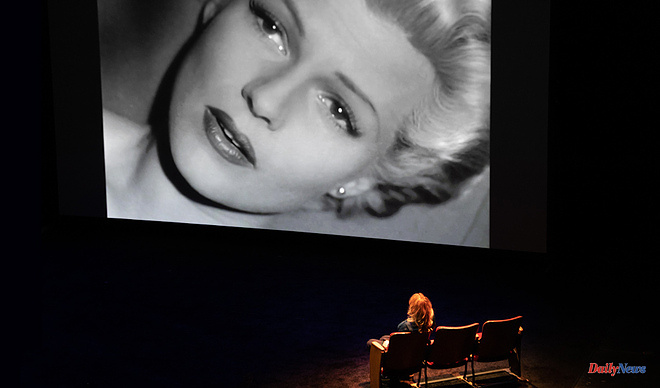"As a filmmaker and as a woman, sometimes I feel like I'm drowning in the powerful vortex that is the visual language. It's very difficult to escape from it." Independent filmmaker Nina Menkes' latest work is non-fiction. Neither is a documentary to use. Already from the start it shows that his is a declaration of intent. A manifesto.
Brainwashed carries with it a subtitle that spells out in three words the ABC's of Menkes' career, not only as a filmmaker but also as a teacher and researcher: Sex - Camera - Power. The almost two hours of footage that the TCM channel premieres this Wednesday at 10:00 p.m. within the cycle Ellas crean: how the way of filming changes abruptly when a man or a woman is in front of the camera, delve into this triangle.
The very long Menkes research process started with a frustrated project. He shot his first movie while he was still a student. Magdalena Viraga, starring her sister, narrated the inner life of a prostitute locked up for having killed her pimp. The long sexual scenes focused on the protagonist's experience, on her face. Nothing was seen in those plans beyond the lost look of that prostitute. It was enough to convey her anguish and her despair.
"It was instinctive," he confesses in a Zoom conversation from Los Angeles, "I didn't think in film language or anything like that, I just wanted to make a movie that was different, that conveyed my point of view." The film won the Los Angeles Film Critics Association Award, screened at the Toronto and Montreal Film Festivals... "It was everywhere except Hollywood. They just ignored me. No calls, nothing ".
Over time, and after the outbreak of the MeToo movement, I came to the conclusion that I had hit on a big problem.
Menkes did not understand it at the time, but that refusal would mark his entire career. "I started teaching not because I wanted to be a teacher, I wanted to be a filmmaker but I couldn't make money with my films. Teaching was a way of survival," she recalls, "and then I started to feel something. I couldn't put it into words, no I could show it, just feel it."
He compiled a dozen movie scenes, from great titles in the history of cinema, and opened a debate with his students. How were actresses lit up? Were the same frames used for the male and female characters? Did the camera movements change when you focused on them? "Over time, and after the outbreak of the MeToo movement, I came to the conclusion that I had hit on a big problem," she says.
The first time she screened her film, the room erupted in applause at a lapidary statement by Nina Menkes, looking defiantly at the camera: "Cinematic language is the linguistic basis of rape culture." That sentence was the ultimate eureka moment. She had to sell the film, explain in a few words what she wanted to tell the investors who could make it a reality, and it came from within.
The male gaze is in our DNA, in our bones. It's like a poison and you have to remove it
The result is the development of the theory of the male gaze devised in 1975 by Laura Mulvey, a pioneer theoretician of feminist cinema, through the analysis of four visual axes: point of view, framing, camera movement and lighting. 175 excerpts from classic or cult films, including commercial cinema, from Scorsese to David Lynch, passing through Tarantino, Kubrick or François Truffaut, parade before the eyes of the astonished spectator, who discovers how the naked or semi-naked body of the woman is shown systematically fragmented, panned and in slow motion, while slo-mo is reserved, in the case of male actors, only for action scenes, and their bare torso always appears, at least, in an American shot.
Even superheroines like Wonder Woman or Black Widow are spared from soft lighting, compared to the contrasting of their peers, nor from shots that present them more like supermodels walking on a catwalk than as warriors. Nor is the difference resolved in films directed by women. For example, the start of Lost in Translation by Sophia Coppola, in which Bill Murray's character is presented pensively on board a taxi in front of Scarlett Johansson lying on the bed in her underwear and whose face cannot be seen. Just the butt.
Brainwashed was originally a small essay inspired by the movement
The reactions to her thesis summarize more than a century of powerful visual education, always with a masculine point of view: "Women told me: 'I knew it, there was something in some great movies that made me feel weird but I didn't know how to put words to it' ", remember, "it is in our DNA, in our bones, it is like a poison and it is necessary to eliminate it". One of the first critics to see the tape wrote: "On the way out, I had to take a Valium."
Hollywood discriminates against women far more than any other job sector. More even than the coal mines
The last few years, marked by the feminist rebellion led by the Weinstein case and also by the rebellion that the actresses led in 2015 against the gender gap in cinema, marked a before and after. The Oscar for Nomadland, the first statuette for a racialized woman in a film with that other feminine look, showed that things could be done differently.
"We have become aware of the problem in the industry," Menkes acknowledges, "now it is time to address the linguistic problem, which will be somewhat more difficult to accept. Hollywood discriminates against women much more than any other labor sector. Even more than the coal mines ".
According to the criteria of The Trust Project












